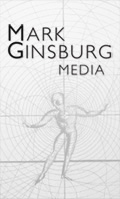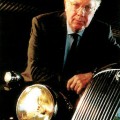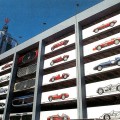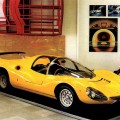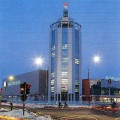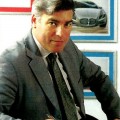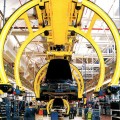-
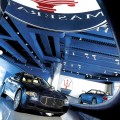 Maserati’s Big Comeback
Maserati’s Big ComebackSergio Pininfarina Dreams Up a Powerful New Luxury Sedan
Architectural Digest
The most important thing about any new Maserati or Ferrari is the wow factor-at the same time, you have to recognize where it’s coming from, even without the badges,” says Frank Stephenson, speaking from an office in the sleek Maserati tower that rises above its new car showroom, by architect Ron Arad, in Modena, Italy. Stephenson, the director of concept design and development for Gruppo Ferrari Maserati, styled BMWs successful MINI Cooper and X5 sport utility and is currently working on the relaunch of the fabled Maserati brand, now owned by its former rival Ferrari.
From the late 1940s to the early 1970s Maserati manufactured some of the most beautiful cars in the world. Whenever the striking 3500GT, Mexico or Ghibli entered the driveway of the Hotel du Cap, Eden-Roc, even the most jaded guests lingered. While Maserati’s clientele included movie stars and magnates, few passengers could trump the glamour, sex appeal and celebrity of the cars themselves.
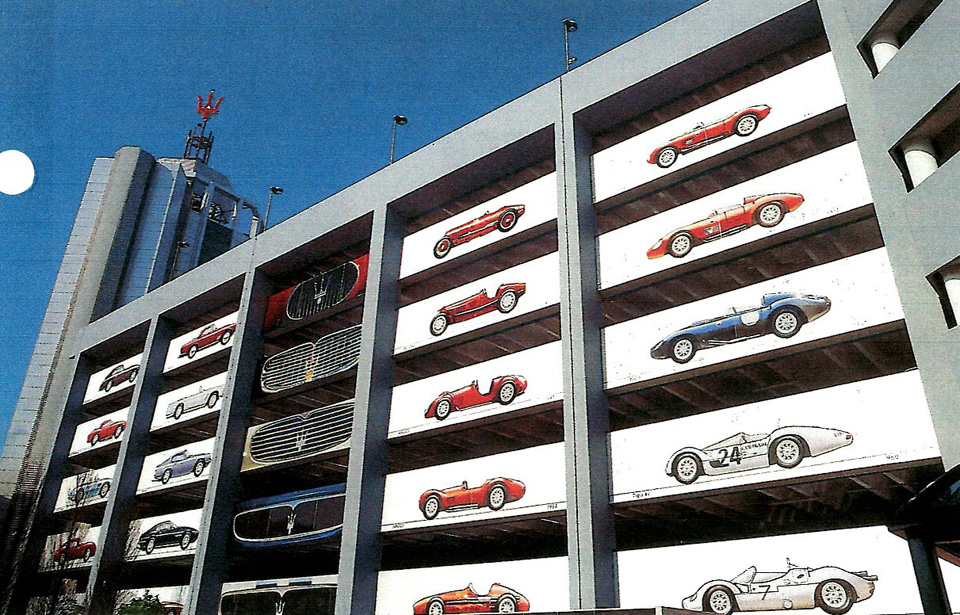
The Maserati factory's parking garage.
“Most car companies have a design studio, but neither Maserati nor Ferrari has had that,” Stephenson says. “We always had to go outside, and the result was that so many people did designs at different periods, there was no connection to the past, no family link.” The “people” were the most fabled coach builders of Turin -Pininfarina, Bertone, Touring, Frua and Giugiaro — and each designed what they thought a Maserati ought to be. To create a template for the future, Stephenson is mining the past. His “10 Commandments” include a large front grille with the trident; chrome door handles; dual twin-exhaust pipes; Poltrona Frau upholstered leather seats with a V shape; and air outtakes on the front fenders. “We’re building the walls, the foundations,” he says. ”Above all, the car must look Italian, but not like a Ferrari, because that’s a different customer.”
Surprisingly, Stephenson and his bosses turned to the man most identified with Ferrari to create the newest Maserati, the Quattroporte, or four-door, sedan. Sergio Pininfarina has been Ferrari’s head designer for more than half-a century. Although his father, Battista, designed the very first Maserati passenger car in the late ’40s (previously they had only produced racing cars), in 1952 Enzo Ferrari and the senior Pininfarina agreed to put young Sergio in charge of Ferrari production and design at the Pininfarina facility. “The cars my father made in ’48 and ’54 were among the best in our history, and they were really my idea, but I never, never, never worked for Maserati,” Pininfarina recalls.
Pininfarina S.p.A. is among the last full-service independent automotive styling and engineering firms in the world. Sought out by automotive manufacturers from GM, Fiat and Ford to Peugeot, Bentley and Jaguar to resolve complex engineering problems or, perhaps, a creative crisis in their own styling departments, Pininfarina can manufacture cars too. The Asians aren’t immune to Pininfarina’s charms either, it’s just that they don’t always want anyone to know. Some clients put the Pininfarina emblem on the fender as a source of pride; others deny they ever set foot in Turin.
“When they come to me for a car, they ask for everything-and then the contrary,” Pininfarina says. “‘The car must be very nice but cost very little.’ It must be ‘very light and roomy yet small on the outside.’ They want it all. In the end I follow my inspiration, and sometimes I’m criticized. But I prefer to be criticized for something I believe. To be criticized for something I’ve obeyed is unbearable.”
Although Pininfarina’s Quattroporte makes no concessions to technology for its own sake, it reflects the engineering of Ferrari, one of the world’s most successful racing brands. The engine sits on and behind the front axle, providing a near-perfect weight ratio and center of gravity that makes the rather large Quattroporte handle like a sports car. A Formula I One-derived transmission ensures that some demands are placed on the driver. The exhaust growl, though never intrusive, is authentic, like everything else in the car. Technology is applied to enhance the driving experience, not detract from it.
“When you open a Quattroporte, you’ll discover that every detail is dictated by reason and function,” Pininfarina remarks. The wood surfaces on the center console wrap around the sides without a crease, like the rolled collar of an expensive Italian suit. “My idea of luxury is clean, simple and unobtrusive,” he adds. Indeed, the Quattroporte arrives mature, as if it’s had experiences and been places its owner might never know about. The wow Stephenson aims for comes quietly and effortlessly.
“The automobile industry is at a stage where you can’t ride on your myth; every bit of design has to be raised to a level,” Stephenson says. “Right off the bat we have to compete directly with the BMW 7 Series, the Mercedes S-Class, the Audi A8, the Jaguar-and they’ve been building those cars forever.” Priced around $90,000, the Quattroporte is exclusive:
Four are built a day, largely by hand. The body contours, as with Ferraris, have human references, rather than animal or technical ones — a Pininfarina trait. The legendary Ferrari-Pininfarina dynamic is apparent in the Quattroporte’s absolute absence of banality: That’s the magic of hands-on design and an enduring partnership. MG
